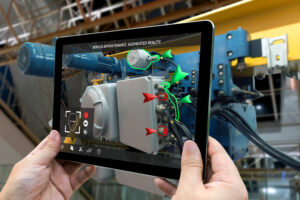
How Augmented Reality Improves Sustainability Efforts
Augmented reality (AR) technology seamlessly integrates digital information with the physical environment, offering interactive and immersive experiences through AR tablets, smartphones, and AR glasses. This innovative technology has transformed various industries by enhancing user engagement and operational efficiency.
For organizations, sustainability has emerged as a pivotal focus, driven by environmental concerns and consumer expectations for eco-friendly practices. Integrating AR into these sustainability efforts presents a unique opportunity to tackle traditional challenges in novel ways, enabling organizations to achieve their sustainability goals more effectively and sustain long-term growth.
What Are the Sustainability Benefits of AR?
AR is a powerful tool in the quest for a more sustainable future. Bridging the gap between digital innovation and environmental responsibility offers compelling sustainability benefits that transform how organizations approach eco-friendly practices.
- Supporting Circular Economy Principles
AR applications enhance product lifecycle management, addressing the challenge consumerist lifestyles pose, which are responsible for considerable global emissions. By facilitating AR-guided sorting and identification, these applications significantly improve recycling processes, making it easier to manage waste effectively.
Further, virtual fitting rooms and digital product trials present innovative solutions to reduce returns and waste, aligning with the need to curb the environmental impact of consumer habits. AR technology promotes sustainability through these measures and encourages a shift toward more responsible consumption patterns.
- Reducing Environmental Impact
Virtual prototyping through AR reduces material waste by allowing designers and engineers to test and iterate designs digitally before any physical production begins. For instance, in interior design, AR apps provide accurate measurements and create digital blueprints, which promote cost savings and streamline project timelines, ensuring efficiency from concept to completion.
Moreover, it facilitates remote assistance and virtual meetings, cutting down on the need for travel and, consequently, reducing travel emissions. This shift toward virtual collaboration saves time and substantially decreases the carbon footprint associated with business operations.
Additionally, AR aids in optimizing operational processes, leading to energy savings across various industries. It promotes sustainability and minimizes environmental impact by enabling more precise and efficient workflows.
- Enhancing Education and Awareness
Interactive AR experiences educate employees and consumers about sustainability, offering immersive journeys that deepen understanding and foster empathy. Providing virtual tours of ecosystems or sites impacted by environmental issues helps individuals grasp the significance of their actions, encouraging a more profound connection with the planet.
Further, gamified AR apps engage users in sustainable behaviors through fun and interactive challenges, making the act of conservation more accessible and rewarding. This innovative approach enlightens and motivates a broader audience to embrace sustainability daily, driving positive change through technology.
How Organizations Can Implement AR for Sustainability
As organizations strive to align their operations with sustainable practices, AR emerges as a transformative tool. Here are techniques to innovate the approach to sustainability, enhance efficiency, and foster a culture of responsibility among stakeholders.
- Marketing and Consumer Engagement
AR experiences changed how organizations promote the sustainability features of their products, with 3D AR ads proving to be exceptionally effective, generating 94% higher conversion rates than conventional ads. This innovative approach captivates the audience and conveys products’ eco-friendly attributes interactively.
Additionally, virtual try-ons and digital showrooms are reducing the reliance on physical samples, significantly cutting down waste and resource use. Interactive campaigns leverage AR to educate and engage customers on sustainability issues, creating an immersive learning environment that encourages informed and conscious consumer choices.
- Product Design and Development
Using AR for virtual prototyping has become consequential for minimizing waste, allowing designers and engineers to refine and test products in a digital space before physical production begins. This approach reduces the need for materials and enhances collaboration among remote teams, cutting down on travel requirements and promoting a more sustainable work environment.
Moreover, AR streamlines the product testing and feedback processes, enabling teams to make real-time virtual iterations and adjustments. This efficient and eco-friendly methodology accelerates development cycles, reduces carbon footprints and fosters a culture of sustainability within organizations.
- Operations and Maintenance
AR promotes efficient resource management and energy savings within organizations. By enabling precise monitoring and management of resources, it significantly reduces unnecessary energy consumption. This is crucial, considering that electricity and heat production are the largest contributors to greenhouse gas emissions worldwide.
It also enhanced maintenance and training processes by facilitating remote assistance, minimizing equipment downtime, and eliminating the need for travel, further reducing carbon emissions. Moreover, augmented warehouse management through AR technology optimizes space utilization and inventory control, effectively reducing waste and enhancing operational efficiency. These innovative AR applications support environmental sustainability and drive economic benefits by lowering operating costs.
Unlocking Sustainability Through AR Technology
Organizations must explore and invest in AR solutions, recognizing their potential to redefine sustainability efforts. Integrating AR into sustainability strategies can lead to significant long-term benefits, including reduced environmental impact, enhanced operational efficiency, and substantial cost savings. By adopting AR, businesses contribute to a healthier planet and position themselves as forward-thinking leaders toward a more sustainable future.